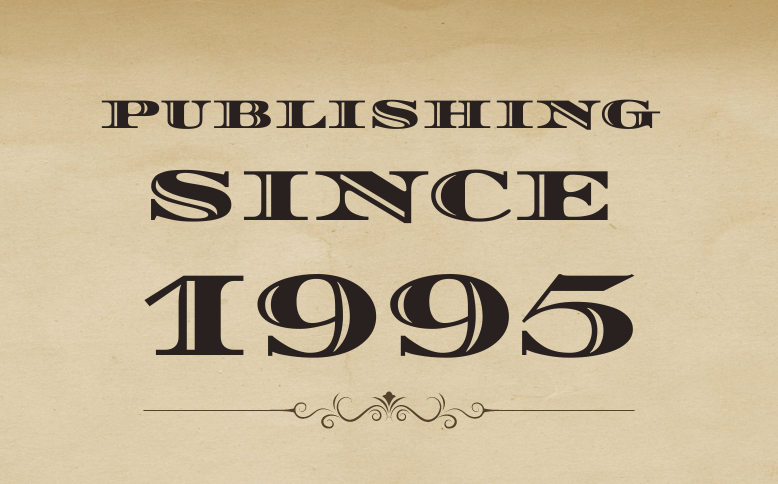Informal E-waste Collection Units and Intention of using Technology
Keywords:
E-waste, Cloud computing, Green IT, IoT, smart solutionAbstract
Technological advancement and resultant proliferation of electronic dumps has immensely hampered health and environment. Authorities in developed and developing countries, find it difficult to control the exponentially growing e-waste menace and the toxic dangers associated with it. However, internet communications and technologies have transformed the way e-waste management scenario is looked upon. Advanced technologies including cloud computing, Internet of Things and Big Data has created new dimensions in management by opening opportunities that are convenient and easily accessible. These have made management activities including collection, transportation, recycling and reuse of electronic equipments with stakeholders much easier. This paper utilized behavioral scales in analyzing the perspective of informal e-waste colleciton units in using technology forcollection activities.
Downloads
References
OECD. Extended producer responsibility; a guidance manual for governments: Organization for Economic Cooperation and Development (OECD) 2001.
Kumar, A., & Sharma, L. A Study of E-Waste Management on the subject of Awareness of college Students. Foreword by Secretary, 41.
Heacock, M., Kelly, C. B., Asante, K. A., Birnbaum, L. S., Bergman, Å. L., Bruné,
M. N., ... & Kamel, M. (2016). E-waste and harm to vulnerable populations: a growing global problem. Environmental health perspectives, 124(5), 550-555.
Widmer, R., Oswald-Krapf, H., Sinha-Khetriwal, D., Schnellmann, M., & Böni, H. (2005). Global perspectives on e-waste. Environmental impact assessment review, 25(5), 436-458.
Bazargan, A., Lam, K. F., & McKay, G. (2012). Challenges and opportunities of e- waste management. Nova Science.
Awasthi, A. K., Wang, M., Wang, Z., Awasthi, M. K., & Li, J. (2018). E-waste management in India: A mini-review. Waste Management & Research, 36(5), 408- 414.
Devika, S. (2010, November). Environmental impact of improper disposal of electronic waste. In Recent Advances in Space Technology Services and Climate Change 2010 (RSTS & CC-2010) (pp. 29-31). IEEE.
McAllister, L., Magee, A., & Hale, B. (2014). Women, e-waste, and technological solutions to climate change. Health and Human Rights Journal, 16(1), 166-178.
Seeberger, J., Grandhi, R., Kim, S. S., Mase, W. A., Reponen, T., Ho, S. M., & Chen,
A. (2016). Special report: E-waste management in the united states and public health implications. Journal of environmental health, 79(3), 8-17.
Tansel, B. (2017). From electronic consumer products to e-wastes: Global outlook, waste quantities, recycling challenges. Environment international, 98, 35-45.
Bisschop, L. (2012). Is it all going to waste? Illegal transports of e-waste in a European trade hub. Crime, law and social change, 58(3), 221-249.
Awasthi, A. K., Zeng, X., & Li, J. (2016). Environmental pollution of electronic waste recycling in India: a critical review. Environmental pollution, 211, 259-270.
UN (2015) Transforming our world: The 2030 agenda for sustainable development, UnitedNations.Availableat:https://sustainabledevelopment.un.org/content/documents/ 21252030%20Agenda%20for%20Sustainable %20Development%20web.pdf (Accessed: 12 November 2016).
Annan-Diab, F., & Molinari, C. (2017). Interdisciplinarity: Practical approach to advancing education for sustainability and for the Sustainable Development Goals. The International Journal of Management Education, 15(2), 73-83.
Malatras, A. (2015). State-of-the-art survey on P2P overlay networks in pervasive computing environments. Journal of Network and Computer Applications, 55, 1-23.
Satyanarayanan, M. (2001). Pervasive computing: Vision and challenges. IEEE Personal communications, 8(4), 10-17.
Mukhopadhyay, S. C., & Suryadevara, N. K. (2014). Internet of things: Challenges and opportunities. In Internet of Things (pp. 1-17). Springer, Cham.
Atzori, L., Iera, A., & Morabito, G. (2010). The internet of things: A survey. Computer networks, 54(15), 2787-2805.
Srivastava, P., & Khan, R. (2018). A review paper on cloud computing. International Journals of Advanced Research in Computer Science and Software Engineering, 8(6), 17-20.
Zhang, K., Cang, P., Geldermann, J., & Song, F. (2010, May). Research on innovative information-flow management of e-waste recycling network based on cloud computing. In 2010 Chinese Control and Decision Conference (pp. 1049- 1053). IEEE.
Yang, H., Tate, M.: A Descriptive Literature Review and Classification of Cloud Computing Research. Commun. Assoc. Inf. Syst. 31 (2012).
Jadeja, Y., & Modi, K. (2012, March). Cloud computing-concepts, architecture and challenges. In 2012 International Conference on Computing, Electronics and Electrical Technologies (ICCEET) (pp. 877-880). IEEE.
Xia, K., Gao, L., Wang, L., Li, W., & Chao, K. M. (2015). A semantic information services framework for sustainable WEEE management toward cloud-based remanufacturing. Journal of manufacturing science and engineering, 137(6).
Zhang, K., Cang, P., Song, F., & Geldermann, J. (2010, August). Research on STOF- model-based innovation of e-waste recycling service system. In 2010 International Conference on Management and Service Science (pp. 1-5). IEEE.
Roy, S., & Bag, M. (2009). Green computing-New horizon of energy efficiency and e-waste minimization–World perspective vis-à-vis Indian scenario. CSI, India, 64-69.
Kumar, T. V., & Kiruthiga, P. (2014). Green computing-an eco friendly approach for energy efficiency and minimizing e-waste. International journal of Engineering Research, 3(5), 356-359.
Soomro, T. R., & Sarwar, M. (2012). Green computing: From current to future trends. World Academy of Science, Engineering and Technology, 63, 538-541.
Vashishtha, V., Gupta, A., & Sarwar, S. (2014). Green Computing: An Approach of Saving Energy by Computer Virtualization. International Journal of Application or Innovation in Engineering and Management (IJAIEM), 3(2), 103-106.
Krishnan, S. S. R., Balasubramanian, K., & Mudireddy, S. R. (2013). Design/Implementation of a novel technique in virtualization to reduce e-waste. Int. J. Adv. Res. Comput. Commun. Eng, 2, 12.
Acemoglu, D., & Restrepo, P. (2018). Artificial intelligence, automation and work (No. w24196). National Bureau of Economic Research.
Nowakowski, P., Szwarc, K., & Boryczka, U. (2018). Vehicle route planning in e- waste mobile collection on demand supported by artificial intelligence algorithms. Transportation Research Part D: Transport and Environment, 63, 1-22.
Król, A., Nowakowski, P., & Mrówczyńska, B. (2016). How to improve WEEE management? Novel approach in mobile collection with application of artificial intelligence. Waste Management, 50, 222-233.
Barletta, I., Johansson, B., Cullbrand, K., Björkman, M., & Reimers, J. (2015, August). Fostering sustainable electronic waste management through intelligent sorting equipment. In 2015 IEEE International Conference on Automation Science and Engineering (CASE) (pp. 459-461). IEEE.
Mdukaza, S., Isong, B., Dladlu, N., & Abu-Mahfouz, A. M. (2018, October). Analysis of iot-enabled solutions in smart waste management. In IECON 2018-44th Annual Conference of the IEEE Industrial Electronics Society (pp. 4639-4644). IEEE.
Zanella, A., Bui, N., Castellani, A., Vangelista, L., & Zorzi, M. (2014). Internet of things for smart cities. IEEE Internet of Things journal, 1(1), 22-32.
Vimal Jerald, A., Rabara, S. A., & Bai, T. D. P. (2015). Internet of things (IoT) based smart environment integrating various business applications. International Journal of Computer Applications, 128(8), 32-37.
K. Ashton, 2009. That „Internet of Things‟ Thing. RFid Journal, 97-114.
Louchez, A., & Thomas, V. (2014). E-waste and the Internet of Things. ITU News.
Misra, D., Das, G., Chakrabortty, T., & Das, D. (2018). An IoT-based waste management system monitored by cloud. Journal of Material Cycles and Waste Management, 20(3), 1574-1582.
Kang, K. D., Kang, H., Ilankoon, I. M. S. K., & Chong, C. Y. (2020). Electronic waste collection systems using Internet of Things (IoT): Household electronic waste management in Malaysia. Journal of Cleaner Production, 252, 119801.
Tao, J. (2010, March). Reverse logistics information system of e-waste based on internet. In 2010 International Conference on Challenges in Environmental Science and Computer Engineering (Vol. 1, pp. 447-450). IEEE.
Gu, F., Ma, B., Guo, J., Summers, P. A., & Hall, P. (2017). Internet of things and Big Data as potential solutions to the problems in waste electrical and electronic equipment management: An exploratory study. Waste Management, 68, 434-448.
Sagiroglu, S., & Sinanc, D. (2013, May). Big data: A review. In 2013 international conference on collaboration technologies and systems (CTS) (pp. 42-47). IEEE.
Crosby, M., Pattanayak, P., Verma, S., & Kalyanaraman, V. (2016). Blockchain technology: Beyond bitcoin. Applied Innovation, 2(6-10), 71.
Zheng, Z., Xie, S., Dai, H., Chen, X., & Wang, H. (2017, June). An overview of blockchain technology: Architecture, consensus, and future trends. In 2017 IEEE international congress on big data (BigData congress) (pp. 557-564). IEEE.
Gupta, N., & Bedi, P. (2018, September). E-waste Management Using Blockchain based Smart Contracts. In 2018 International Conference on Advances in Computing, Communications and Informatics (ICACCI) (pp. 915-921). IEEE.
Kosba, A., Miller, A., Shi, E., Wen, Z., & Papamanthou, C. (2016, May). Hawk: The blockchain model of cryptography and privacy-preserving smart contracts. In 2016 IEEE symposium on security and privacy (SP) (pp. 839-858). IEEE.
Atzei, N., Bartoletti, M., & Cimoli, T. (2017, April). A survey of attacks on ethereum smart contracts (sok). In International conference on principles of security and trust (pp. 164-186). Springer, Berlin, Heidelberg.
Hatzivasilis, G., Christodoulakis, N., Tzagkarakis, C., Ioannidis, S., Demetriou, G., Fysarakis, K., & Panayiotou, M. (2019, May). The CE-IoT Framework for Green ICT Organizations: The interplay of CE-IoT as an enabler for green innovation and e- waste management in ICT. In 2019 15th International Conference on Distributed Computing in Sensor Systems (DCOSS) (pp. 436-442). IEEE.
Y. Kalmykova, M. Sadagopan, and L. Rosado, “Circular economy – From review of theories and practices to development of implementation tools,” Resources, Conservation and Recycling – Sustainable Resource Management and the Circular Economy, Elsevier, vol. 135, issue 1, pp. 190-201, Aug. 2018.
A. Heshmati, “A review of the circular economy and its implementation,” International Journal of Green Economics, Inderscience, vol. 11, issue 3/4, pp. 251- 288, Feb. 2018.
Davis, F. D., Bagozzi, R. P., & Warshaw, P. R. (1989). User acceptance of computer technology: a comparison of two theoretical models. Management science, 35(8), 982-1003.
Lee, Y., Kozar, K. A., & Larsen, K. R. (2003). The technology acceptance model: Past, present, and future. Communications of the Association for information systems, 12(1), 50.
Venkatesh, V., and F.D. Davis (2000) “A Theoretical Extension of the Technology Acceptance Model: Four Longitudinal Field Studies” Management Science 46(2), pp. 186-204.
Ajzen, I. (1991). The theory of planned behavior. Organizational behavior and human decision processes, 50(2), 179-211.
Rana, N. P., Dwivedi, Y. K., Williams, M. D., & Weerakkody, V. (2015). Investigating success of an e-government initiative: Validation of an integrated IS success model. Information Systems Frontiers, 17(1), 127-142.
Mutahar, A. M., Daud, N. M., Ramayah, T., Isaac, O., & Alrajawy, I. (2017). Integration of innovation diffusion theory (IDT) and technology acceptance model (TAM) to understand mobile banking acceptance in Yemen: the moderating effect of income. International Journal of Soft Computing, 12(3), 164-177.
Gu, J. C., Lee, S. C., & Suh, Y. H. (2009). Determinants of behavioral intention to mobile banking. Expert Systems with Applications, 36(9), 11605-11616.
Akturan, U., & Tezcan, N. (2012). Mobile banking adoption of the youth market. Marketing Intelligence & Planning.
Onurlubaş, E. (2018). The mediating role of environmental attitude on the impact of environmental concern on green product purchasing intention. EMAJ: Emerging Markets Journal, 8(2), 5-18.
Amin, H., Hamid, M. R. A., Lada, S., & Anis, Z. (2008). The adoption of mobile banking in Malaysia: The case of Bank Islam Malaysia Berhad (BIMB). International Journal of Business and Society, 9(2), 43.
Vining, J., & Ebreo, A. (1992). Predicting recycling behavior from global and specific environmental attitudes and changes in recycling opportunities 1. Journal of applied social psychology, 22(20), 1580-1607.
Carlson, K. D., & Herdman, A. O. (2012). Understanding the impact of convergent validity on research results. Organizational Research Methods, 15(1), 17-32.
Farrell, A. M. (2010). Insufficient discriminant validity: A comment on Bove, Pervan, Beatty, and Shiu (2009). Journal of Business Research, 63(3), 324-327.
Hair, J. F., Anderson, R. E., Babin, B. J., & Black, W. C. (2010). Multivariate data analysis: A global perspective (Vol. 7): Pearson Upper Saddle River.
Downloads
Published
How to Cite
Issue
Section
License
You are free to:
- Share — copy and redistribute the material in any medium or format for any purpose, even commercially.
- Adapt — remix, transform, and build upon the material for any purpose, even commercially.
- The licensor cannot revoke these freedoms as long as you follow the license terms.
Under the following terms:
- Attribution — You must give appropriate credit , provide a link to the license, and indicate if changes were made . You may do so in any reasonable manner, but not in any way that suggests the licensor endorses you or your use.
- No additional restrictions — You may not apply legal terms or technological measures that legally restrict others from doing anything the license permits.
Notices:
You do not have to comply with the license for elements of the material in the public domain or where your use is permitted by an applicable exception or limitation .
No warranties are given. The license may not give you all of the permissions necessary for your intended use. For example, other rights such as publicity, privacy, or moral rights may limit how you use the material.









